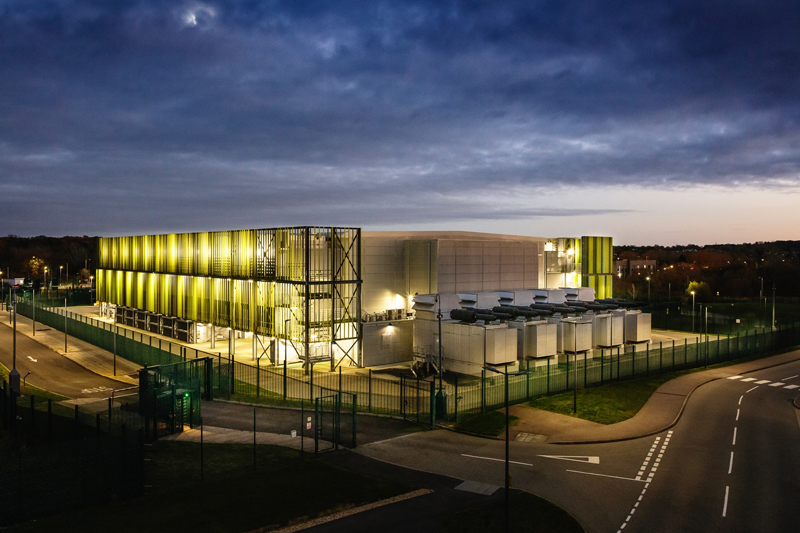PEW goes behind the scenes at a new student accommodation site at Durham University.
The Mount Oswald student accommodation site at Durham University serves John Snow College and the brand-new South College. The purpose-built facility provides rooms for 1000 students and offers accommodation, common rooms, welfare facilities and café bars. There is a new University Hub with a 300-seat events hall and music practice rooms. The Colleges share a gym, a launderette, a faith and quiet room, a dance studio, performance practice space and a multi-use games area.
Work began on the project site in 2018. The project’s value at the time was circa £75M and it is let under a 50year PPP. The Joint Venture Partnership of Campus Living Villages, Equitix and Interserve submitted the winning bid.
Evaluating the capital cost, running cost and service cost of any proposed solution was fundamental to the viability of the bid. BSAP Ltd. was appointed to produce a design concept for building services within the scheme.
Martyn Harrison of BSAP explains, “Our philosophy is fabric first – making the building thermally efficient. Our DNA is trying to get away with as few building services as we can. Being instrumental in the early stages of the design process is so important in ensuring that building services are not an add on, but fundamental to the architect’s scheme. As a small consultancy with accomplished partners, we are very hands-on, we provide the voice of experience whenever we embark on a project”
He continues, “The biggest challenge we face is incorporating best practice solutions while making the project affordable. Recognising that there is an affordability issue in everything we do is key in arriving at the right design. BSAP is unusual in that we have a lot of cost planning experience aligned with design. Having designers sitting in this costing environment allows us to bounce our ideas around and ask the questions at the start; is this affordable or would another idea be better in this set of circumstances? How does new legislation affect the project? Are we exposing a client to undue pressure? Will this design make a client vulnerable? Will the re-sell of the building be compromised?”.

Electric Heating
Where appropriate, BSAP will advocate an all-electric system and this was the case with Mount Oswald – he explains, “Some initial concepts had been put forward before the contract was awarded. One of them involved a district heating network because Durham [University] has experience of this around its estate and there was quite a strong desire to go down that route. However, we didn’t feel that was the right solution because a lot of energy is used to heat and pump medium temperature or LTHW (Low Temperature Hot water) through huge distribution networks. It is a costly exercise, with pumps and boilers working all the time. It is heating the whole system, not just the demand that is there. That is really energy inefficient. There is system loss too. The whole point is that it isn’t cost effective, both in capital expense (CAPEX) and operational cost (OPEX) terms. The question has to be asked, ‘What is the point of this infrastructure if there isn’t a heating load within the building?’”
“Effectively there is this massive inertia in general distribution networks that is a significant cost – just for showering! That is where we pin-pointed the energy efficiency issue. In our opinion a better solution was electrical heating. If the building is thermally efficient, then the load is hot water – it isn’t predominantly the space heating! This negates the need for a massively expensive to install and maintain general distribution network.”
To control the electric heating BSAP researched what was available. During conversations with student accommodation providers, they noted that Prefect Irus was mentioned numerous times. The simplicity and cost effectiveness of Irus was a big draw.
“We were sold on it primarily due to its compliance with reducing carbon use; energy efficiency in terms of only using heat when it is needed; and it is a very competitive CAPEX/OPEX. A lot of the big schemes are looking at a 50-year lifespan – meaning replacement of all the infrastructure of the building services at years 20-25.”
Recommendation
In fact, BSAP were so impressed with Irus that they have installed a small-scale system in their new offices in York. Martyn explains “You would expect a building services company to have air conditioning, but we chose not to, we have destratification fans, we have a lot of air movement, we open the windows for ventilation, and we have electric panel heaters as our solution, these are controlled by Irus. The central control is a real plus, monitoring and controllability is easy. We felt that if we are recommending a system, we ought to put our money where our mouth is!”
To find out more here





